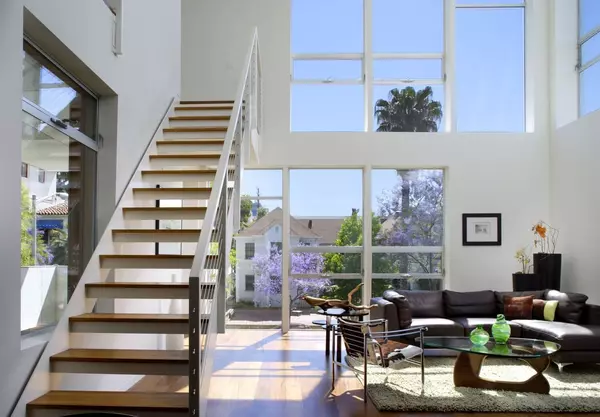Montana is Failing in Affordability and Homebuilding: Can Governor Gianforte Close the Gap?

Montana’s wide-open spaces may be iconic, but its housing market is tightening fast.
The Realtor.com® State-by-State Housing Report Card gave the Treasure State a D, underscoring just how far behind it has fallen in both affordability and construction. The report, part of the Let America Build campaign, evaluates each state’s ability to balance current affordability with new home supply. For Montana, a booming population and limited new construction have created one of the sharpest affordability declines in the nation.
But make no mistake, this is still a national problem. In fact, President Donald Trump recently put pressure on homebuilders to increase construction nationwide, given the issues with construction in the country. In a post on his Truth Social platform in early October, he accused major builders of hoarding lots to prop up prices—likening them to OPEC, which restricts oil output to maintain high prices.
“They’re my friends ... but now, they can get Financing, and they have to start building Homes. They’re sitting on 2 Million empty lots, A RECORD,” Trump wrote. He urged Fannie Mae and Freddie Mac to intervene and “get Big Homebuilders going” to “restore the American Dream.”
So what could Montana be doing to make a move towards increasing home production?
Montana’s “D” grade explained
Realtor.com analysis gave Montana a total score of 35.2—placing it among the lowest-ranked states in the country. The state’s median listing price reached $634,523 in 2024, while the median household income stood at $69,683, leaving most buyers priced out of ownership. The Realtors Affordability Score of just 0.40 was the weakest in the nation, signaling that very few listings are attainable for middle-income households.
In terms of supply, Montana made up only 0.4% of national housing permits last year despite holding roughly 0.3% of the U.S. population. That puts its permit-to-population ratio at about 1.3—better than some coastal states, but still far below what’s needed to address its growing demand. The new construction premium—how much more new homes cost than existing ones—was 14.7%, showing that even recently built homes remain out of reach for many residents.
Economists at Realtor.com note in the report that states like Montana are being squeezed by migration from higher-cost areas. New residents, many with larger budgets, have driven up demand for limited housing stock, leaving local workers struggling to compete.
How Montana stacks up against the West
According to the Realtor.com New Construction Insights report, new construction nationwide is helping ease affordability challenges—but the benefits haven’t fully reached the West. The median new-home price nationally held steady at $450,797, while resale prices rose 2.4%, narrowing the price gap between new and existing homes to just 7.8%, the lowest ever recorded.
Regionally, however, the West continues to face high land costs, tight zoning rules, and volatile material prices. The report found that Western states experienced the steepest drop in the share of new-construction listings even as the total number of homes under construction rose. That mismatch reflects how inflation and tariffs have made it harder for builders to deliver affordable inventory.
In Montana, the problem is especially acute in booming metros like Bozeman, Missoula, and Kalispell, where population growth has outpaced construction by years.
Governor Gianforte’s housing plan takes shape
With that said, Governor Greg Gianforte has made expanding housing supply a cornerstone of his administration. His signature policy, the Home Ownership Means Economic Security (HOMES) Program, is designed to increase the number of affordable homes through targeted investment.
Passed by the legislature in 2023, the program created a revolving loan fund to expand water and sewer infrastructure—an essential step for unlocking new housing development.
“The housing shortage is one of the biggest issues facing Montanans as supply has not kept up with demand,” Gianforte said, according to his office's press release. “Through the HOMES Program, we’re giving home builders the resources they need to increase our supply of housing so that hardworking Montanans can live in the communities where they work.” The program has already supported nearly 1,000 new homes statewide, with an additional $100 million in funding proposed to expand the effort.
By focusing on infrastructure and local partnerships, the HOMES initiative is laying groundwork for more attainable housing—but state leaders acknowledge it will take years to close the gap.
Building toward balance
The National Association of Home Builders’ Blueprint to Address the Housing Affordability Crisis offers a national parallel to Montana’s approach: reduce regulatory barriers, fix material supply chains, and cut permitting roadblocks to make new homes easier to build.
For Montana, those solutions could prove essential.
“America is short more than 4.7 million homes, and every new home built helps close that gap while fueling local economies," says Shannon McGahn, executive vice president and chief advocacy officer at the National Association of Realtors®.
"NAR research shows that the U.S. has faced a persistent housing shortage for more than a decade, driving up prices and limiting options for buyers. Expanding housing supply creates jobs, supports small businesses, and affords families the opportunity to build generational wealth.”
This article was produced with editorial input from Dina Sartore-Bodo and Gabriella Iannetta.
Categories
Recent Posts











"My job is to find and attract mastery-based agents to the office, protect the culture, and make sure everyone is happy! "
